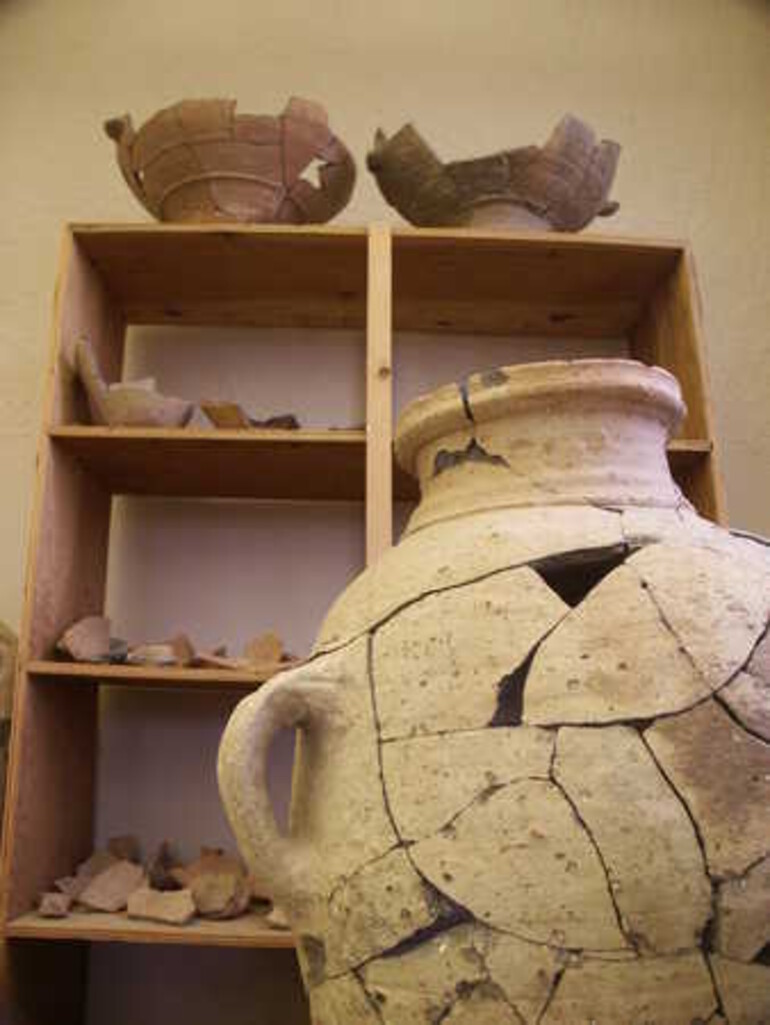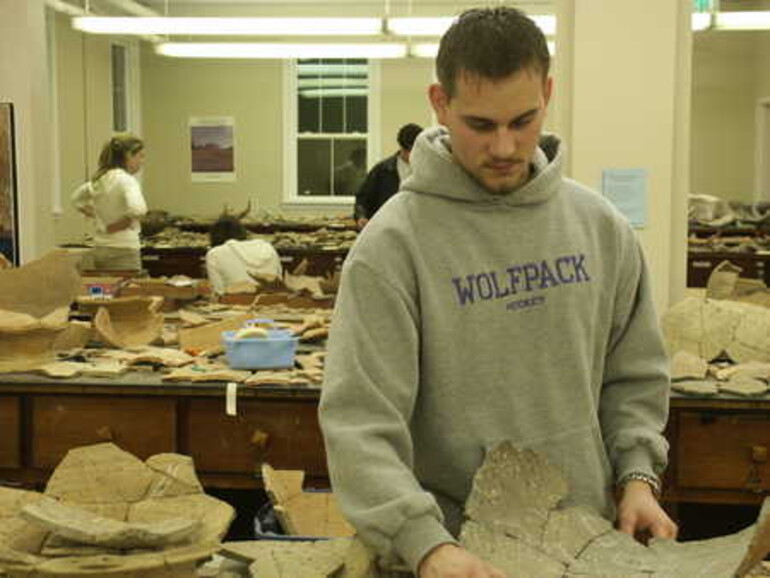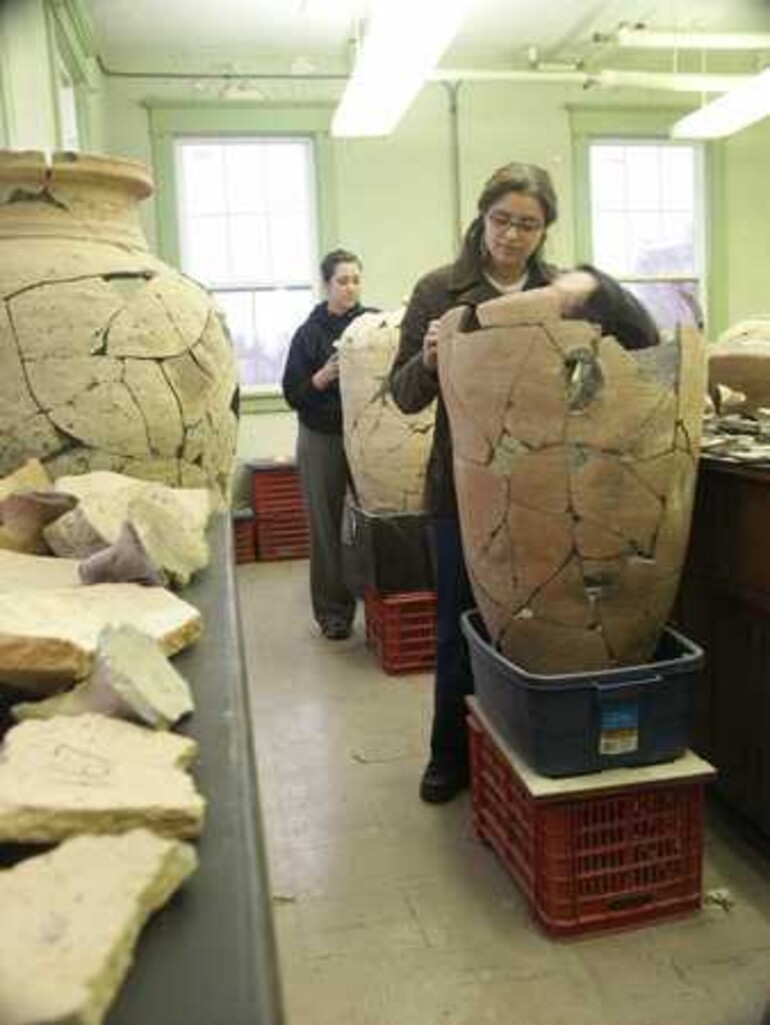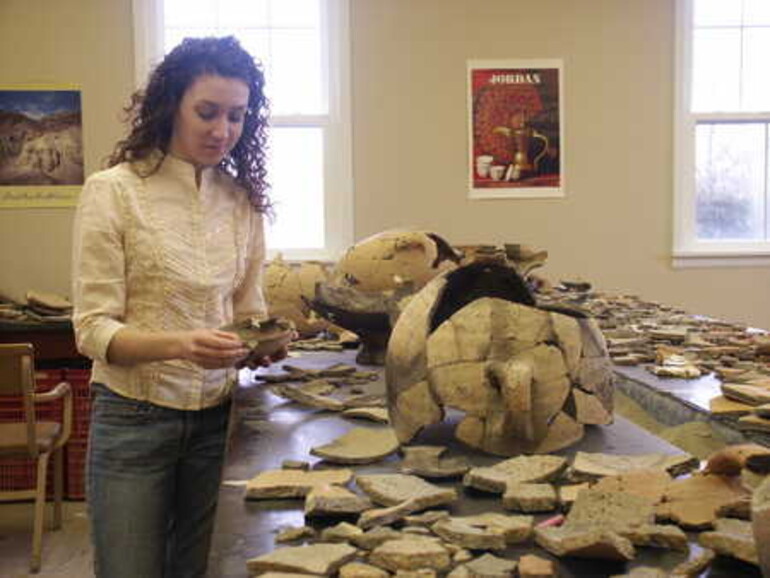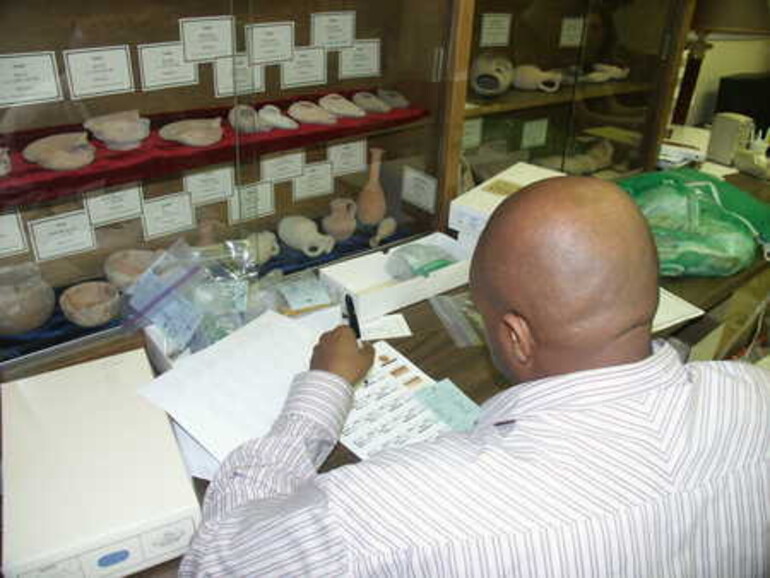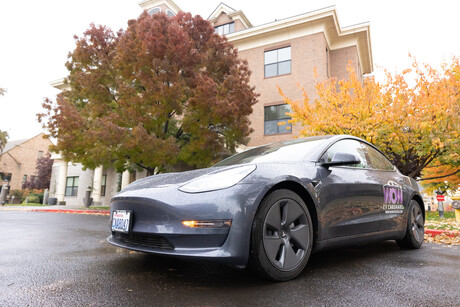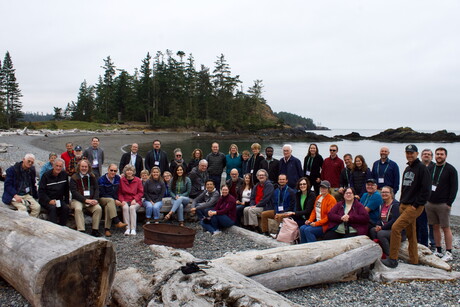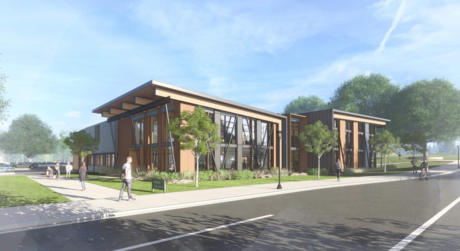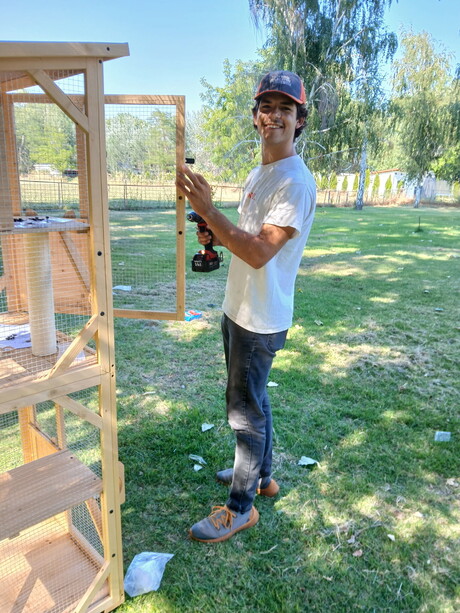In the basement of Bowers Hall, one of the oldest buildings at Walla Walla University, is a large room full of broken pottery. All of it dates to eras before Christ.
Every other summer, the Madaba Plains Project, sponsored by La Sierra University, organizes an archaeological dig at a place called Tall al-`Umayri, near Amman, Jordan. WWU, in collaboration with the project, sends students to the dig site.
Most excavated items are sent back to WWU's archaeology lab. There, students can attempt to match centuries-old shards of pottery together. Using colored chalk, they mark, on the inside of the pottery, how they think the pieces go together.
When they've figured it out, students use Elmer's glue to attach the pieces. Why Elmer's and not some specialized bonding substance? Elmer's glue is sturdy enough to hold the pottery shards together, but dissolves easily just in case it turns out the pieces don't quite match.
Matching shards isn't all students do. WWU graduate Matthew Vincent, an archaeology minor, spent hours in the lab working on his senior project: translating a tablet from Acadian, an ancient dead language.
In 2004, WWU students helped to uncover a shrine to unknown gods in Jordan. In 2006, they uncovered an altar in front of the shrine. Experts are still unsure what the building is, though there is speculation it may have been a palace. Objects found during these digs are on display at an art museum in California.
Students pursuing a minor in archaeology at WWU are required to participate in at least one dig. The digging season in Jordan lasts throughout July.
While on a dig, students and faculty alike are awake by 4:15 every morning. They eat a quick breakfast, board the bus at 5 a.m., and are at the dig site by 5:30 a.m. At 9 a.m., diggers enjoy a quick second breakfast, and continue their work at the site until 12:30 mid-day, when field work is closed down and all participants return to camp for the hottest part of the day.
Afternoons include lunch, quiet time, and lab work, involving artifact recording and other record-keeping. If the students are getting credit for their time in Jordan, they attend an evening lecture before wrapping up the day at 9 p.m.
Sabbaths provide respite. Sometimes students attend the Adventist church in Jordan, other times they take weekend tours with professors as their guides.
Lindsey Hill, junior archaeology minor, works as the archaeology lab manager at WWU. On a dig, Hill was always impressed with the professors' knowledge and skill. By simply examining the rim of a jar or flakes of leftover paint, they can identify the era in which an artifact was made.
"This program is so great," says Hill. "It opens your eyes to what ancient civilizations were like, and brings the Bible to life."
Once the artifacts are in the lab, anyone, even the public, is welcome to try their hand at matching pieces together. Lab hours and contact information are posted at www.wallawalla.edu/archaeology.




